Andaman Islands 2017
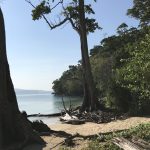
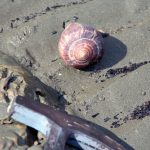 In February 2017, we conducted a fieldwork in Paradise, on the Andaman Islands in the Indian ocean. These islands lie above and very close to the subduction zone of the Indian plate below Southeast Asia, and were strongly affected by the devastating 2004 earthquake and tsunami. They also expose Cretaceous ophiolites and Paleogene forearc and foreland basin deposits – the reason we went there. We collected samples for our subduction initaition project in the Neotethys Ocean (SINK(. Below you find pictures of the team, the fieldtrip, and some niceties that you bump into on tropical beaches.
In February 2017, we conducted a fieldwork in Paradise, on the Andaman Islands in the Indian ocean. These islands lie above and very close to the subduction zone of the Indian plate below Southeast Asia, and were strongly affected by the devastating 2004 earthquake and tsunami. They also expose Cretaceous ophiolites and Paleogene forearc and foreland basin deposits – the reason we went there. We collected samples for our subduction initaition project in the Neotethys Ocean (SINK(. Below you find pictures of the team, the fieldtrip, and some niceties that you bump into on tropical beaches.
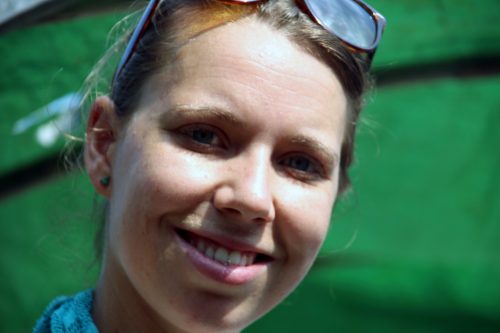
Yael Engbers, MSc student at Utrecht University
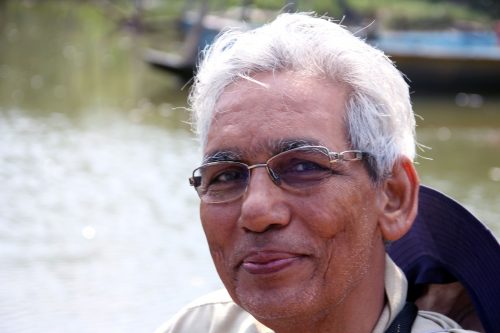
Pinaki Bandopadhyay, former director of the Geological Survey of India, Kolkata
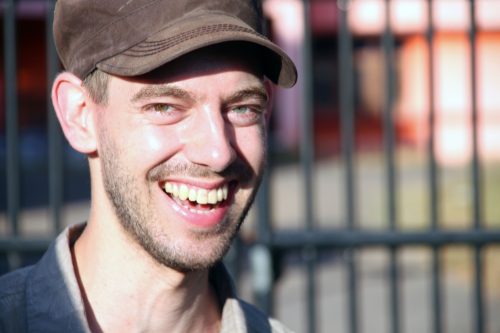
Eldert Advokaat, Post-doc at Utrecht University
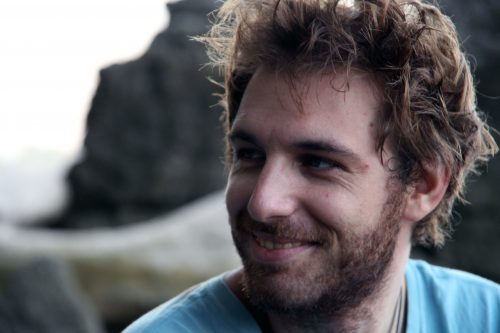
Alexis Plunder, post-doc at Utrecht University
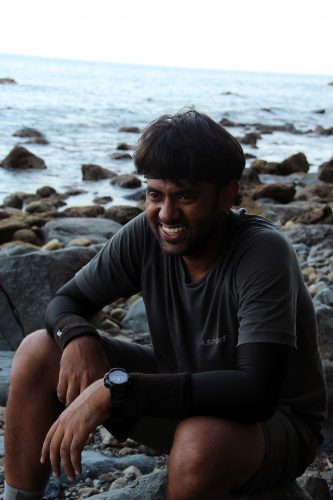
Debaditya Bandyopadhyay, PhD student at the University of Calcutta
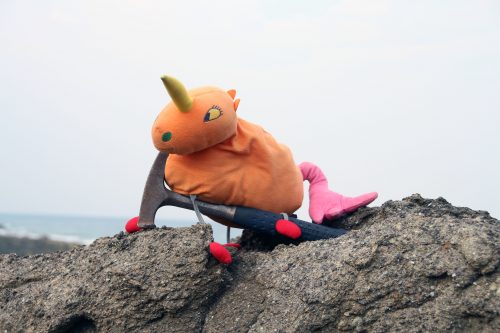
Loes van Unnik Hoorn, one of the lousiest geologists I’ve ever met
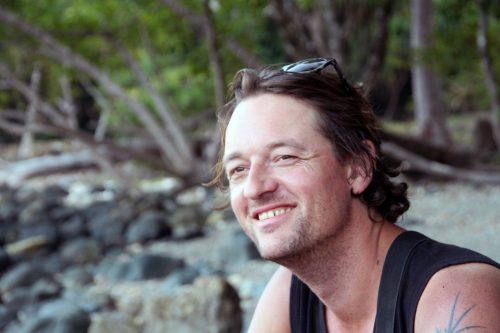
…and me
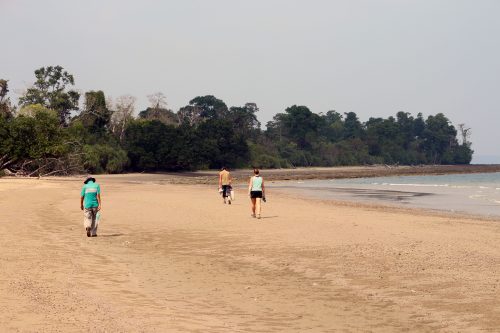
Fieldwork on the Andaman Islands means that you’re hunting for exposures on tropical beaches, since the rest of the island is unfortunately overgrown by jungle
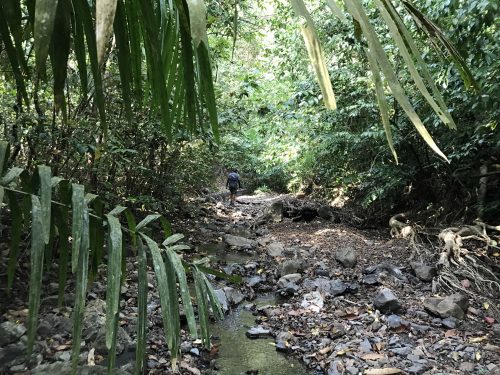
There’s some work you can do in rivers…
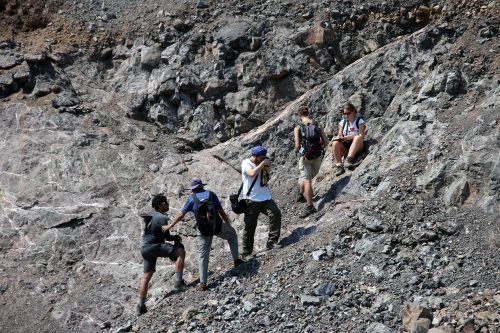
…and there is the occasional quarrie
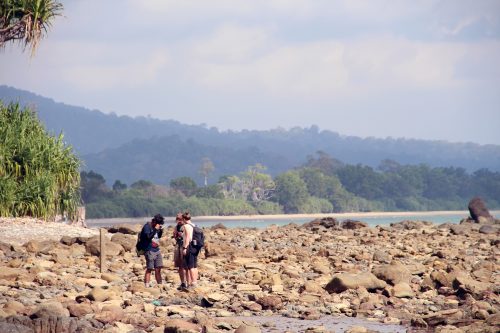
…but it’s mainly beach work 🙂
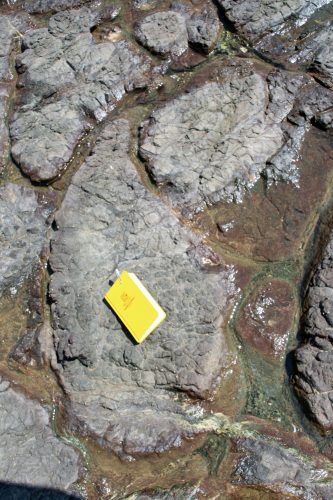
Aim of the fieldwork was to constrain the paleolatitude of the ophiolites of the Andaman islands. To this end we targeted for instance these pillow lavas
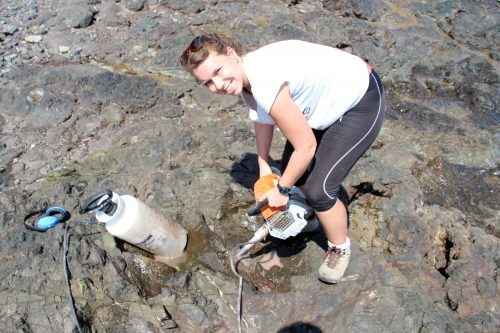
…which we then sampled using my new drill toolkit!
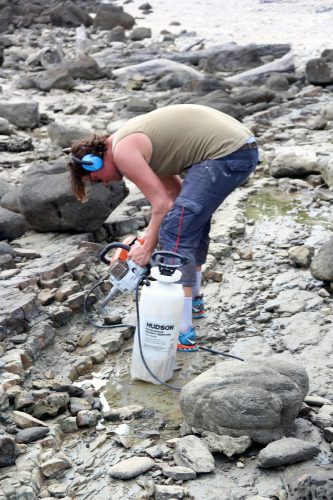
We also collected paleomagnetic samples from the younger stratigraphy
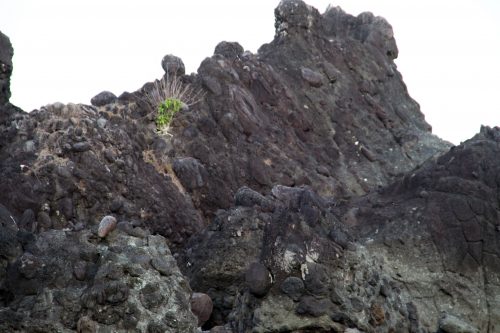
…we also ran into these funny rocks…looks like there was a stratavolcano nearby, but we’re 20 miles from a trench, so where did that thing come from?
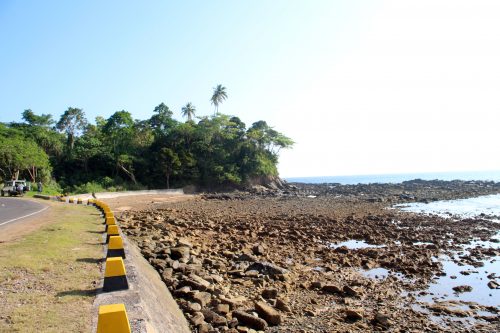
We also extensively sampled forearc and foreland basin deposits exposed on the island, here’s a section in the east Andaman flysch
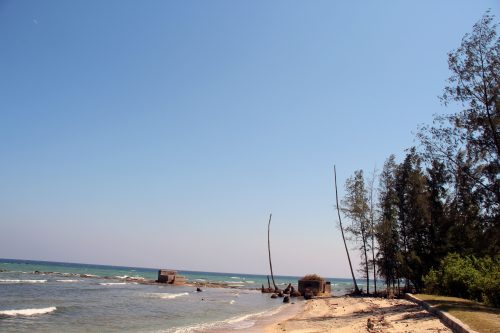
Along those beaches you still find relics of second world war Japanese bunkers
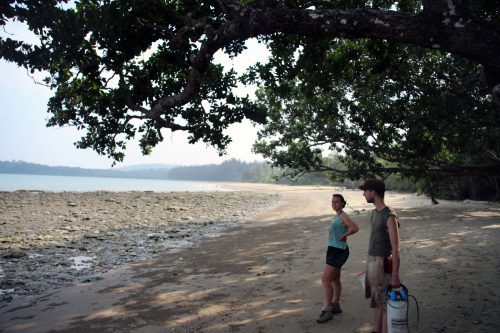
…and of the devastating 2004 earthquake. Here you see next to the beach a dead coral reef that was uplifted by about 1 meter during the quake. Now it’s emerged during low-tied and the corals died.
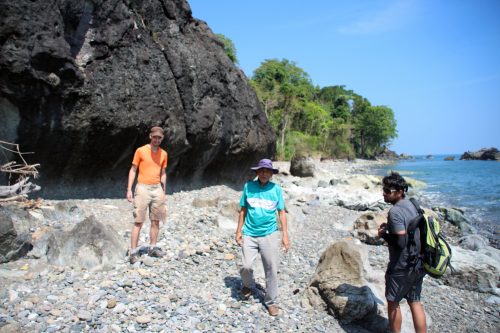
…or here you see a rock carved out by wave action…and it’s high tide in this photo. Not much wave action on this rock anymore these days
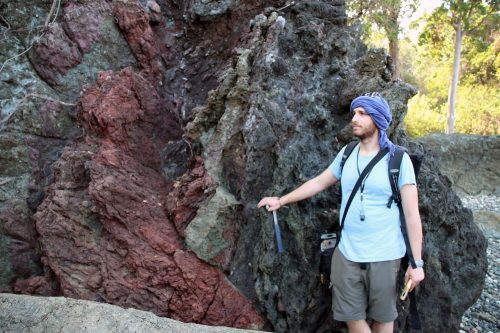
Another important target was the metamorphic sole below the Andaman ophiolites. We found much better rocks than described in the literature so far
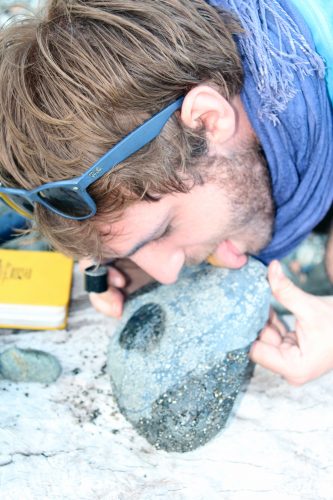
Alexis liked sole rocks!
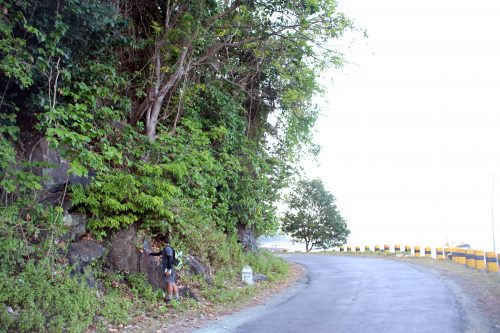
One of the few locations where we may have found the sole in situ – thin section check on the way
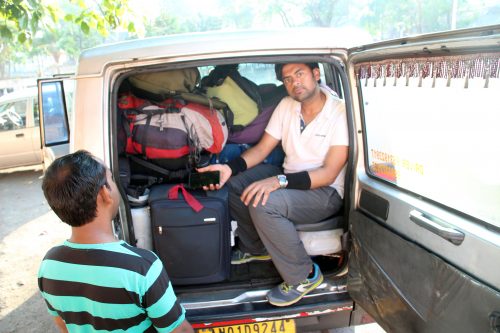
We did fieldwork on South, Middle, and North Andaman. Here we’re on our way with 7 people in a jeep plus luggage…a bit tight sometimes 🙂 Deba taking backseat duty
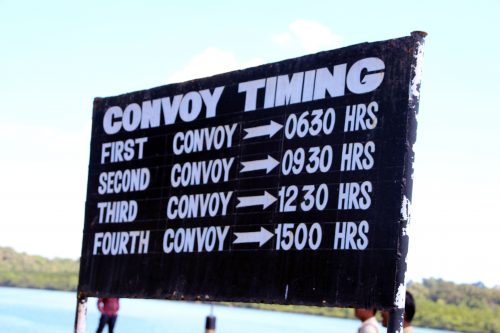
The northern 50 km of South Andaman is Jerawa territory, the indigenous people of the Andaman islands. You can cross per convoy 4 times a day, and you’re not allowed to stop until you crossed.
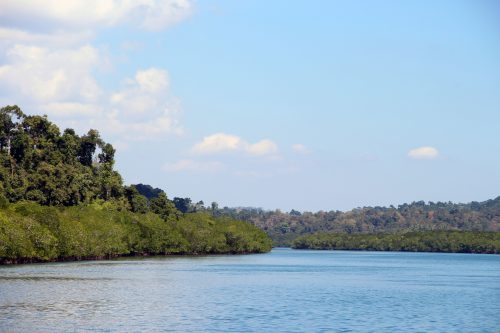
Then we needed to cross the narrow straights between South and Middle Andaman, flanked by mangroves…
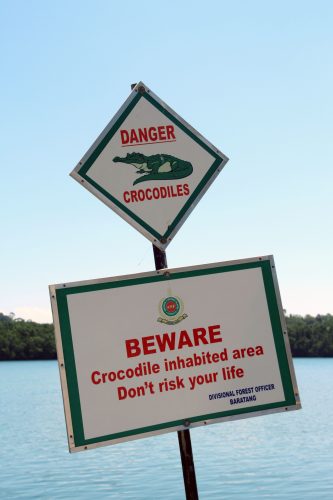
…and since swimming seemed not the best idea…
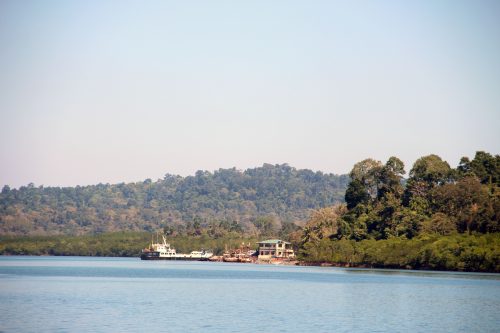
…we went by boat.
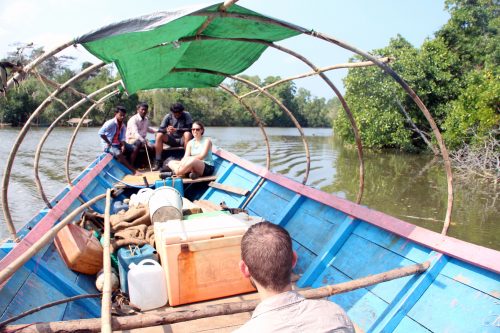
We did a lot of fieldwork by boat. Here on a trip through mangrove forest in western North Andaman…
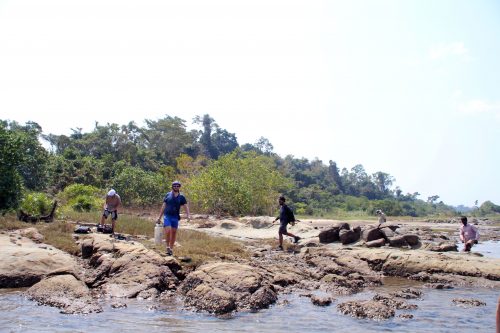
Trip took about an hour one way to find this outcrop of west Andaman flysch. But it was a good outcrop!
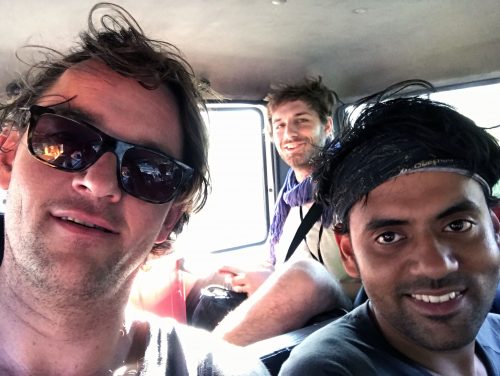
In the car, on our way to the next boat
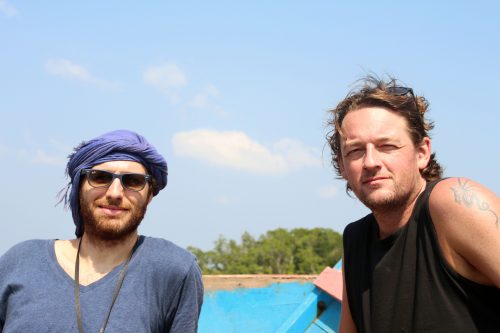
boat rides were the highlight of the trip 🙂
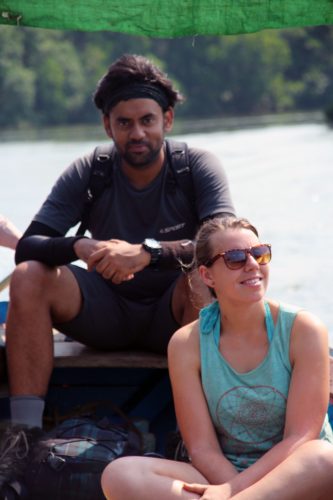
Deba and Yael enjoying it
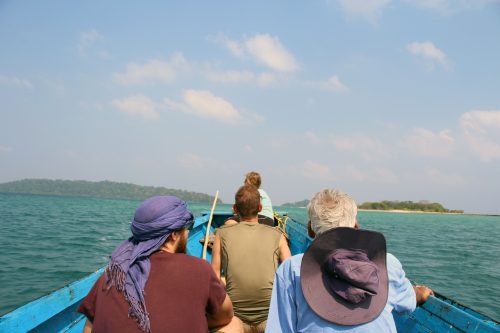
On our way to Ross and Smith islands
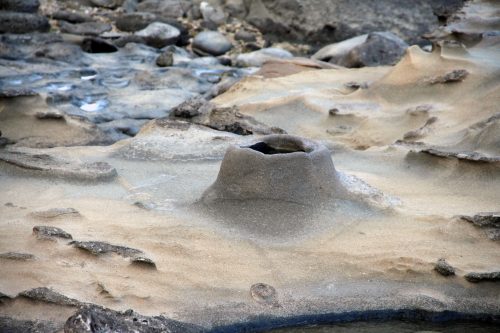
To sample and see sand volcanoes!
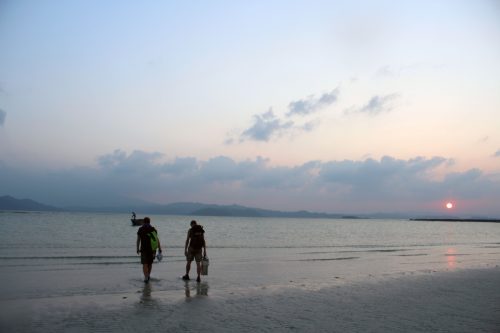
…and sunsets
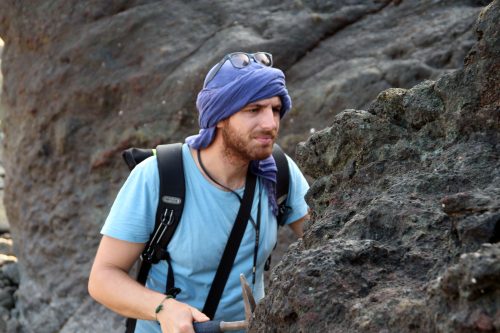
Alexis, checking out some rocks
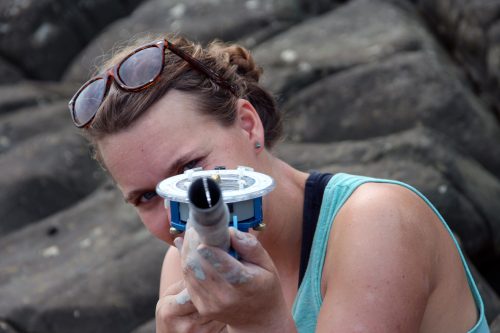
Yael, shooting a direction
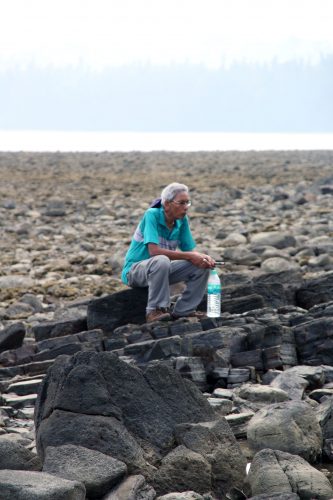
Pinaki, enjoying life
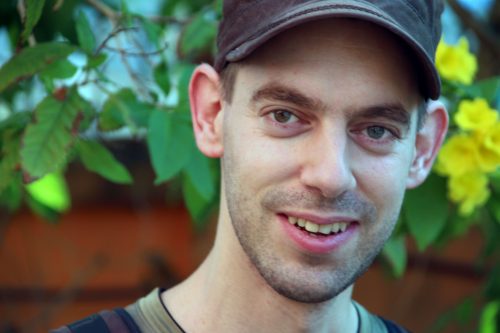
Eldert, doing the same
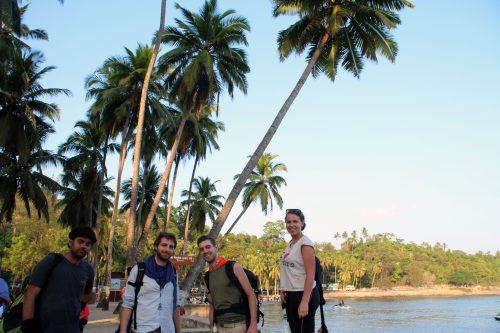
Team, waiting on a tropical beach for low tide
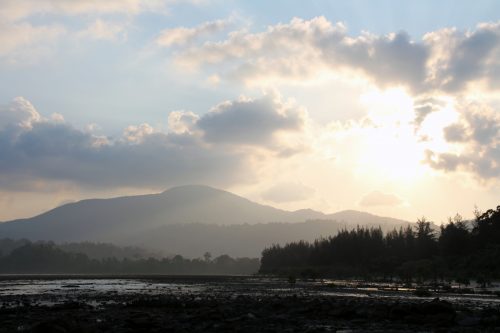
At the end of the sampling day…
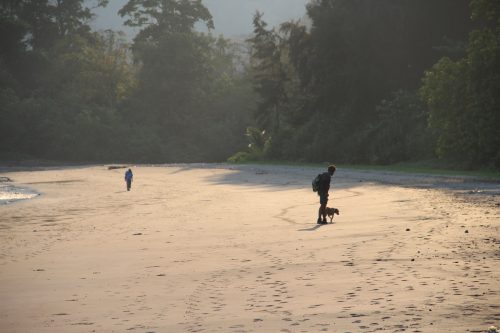
Pinaki and Deba in the sunset
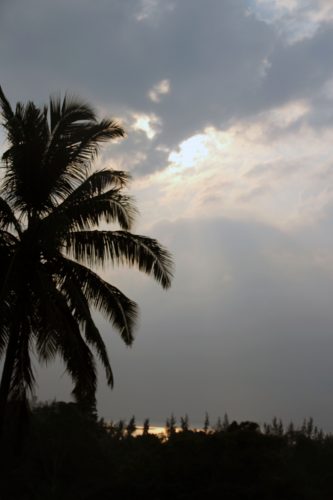
Obligatory palm tree
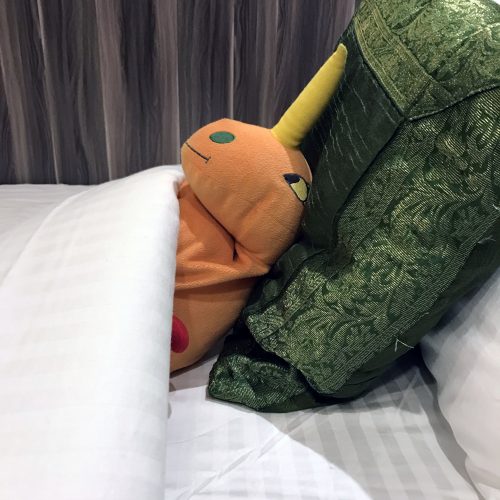
Loes, sleeping it off and trying to remember who the hell it was that left her room earlier that morning
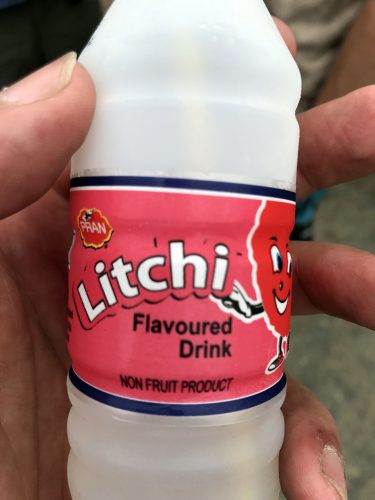
Brutally honest advertisement 🙂
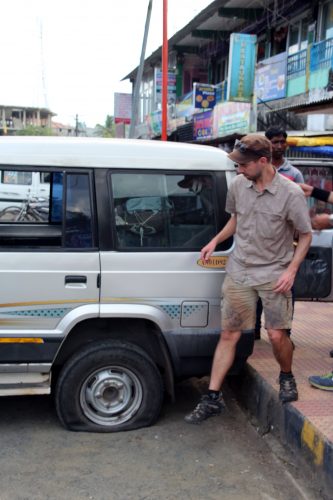
The usual field fun
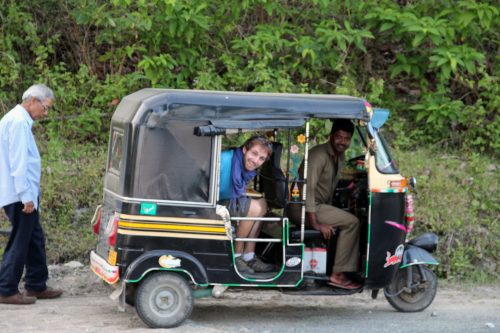
Replacement field car 🙂
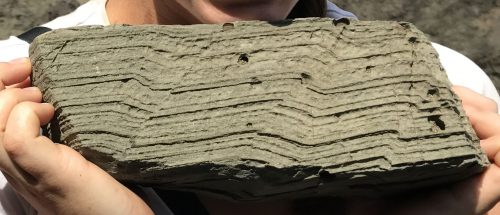
Small-scale fault propagation folds!
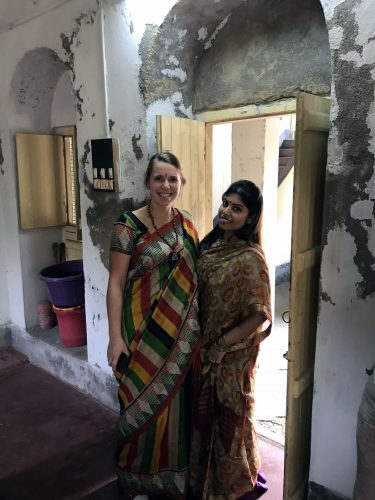
Yael, enjoying Indian dress!
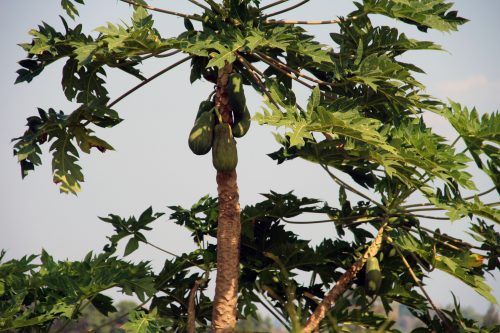
Papaya tree
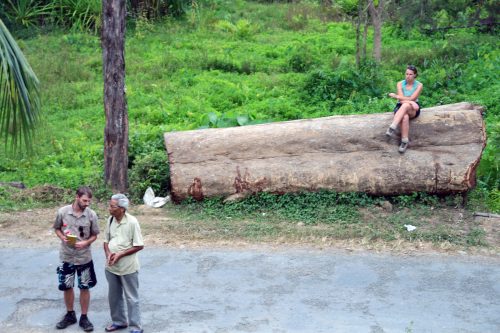
Eldert, Pinaki, and Yael doing fieldwork along a jungle road
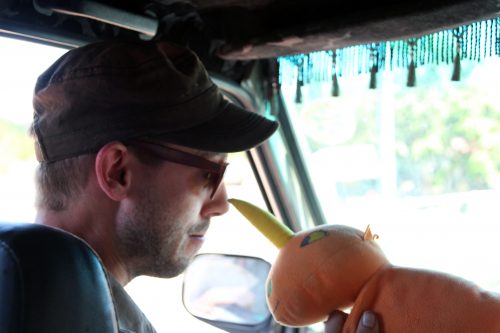
Eldert and Loes having a dispute.
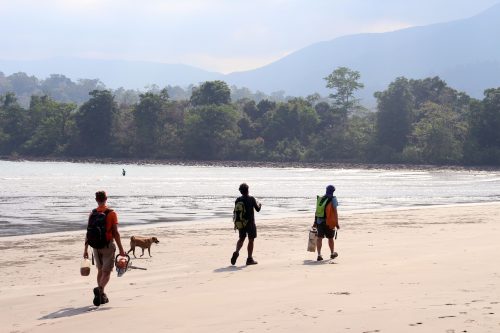
On our way to our next site
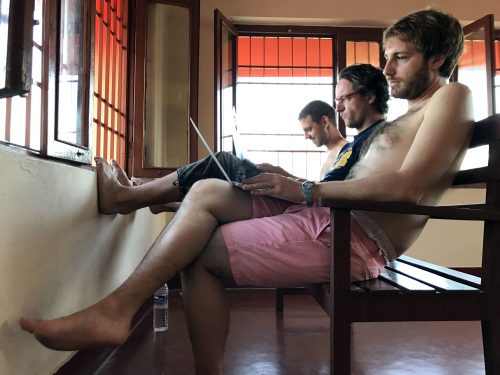
Working early in the morning
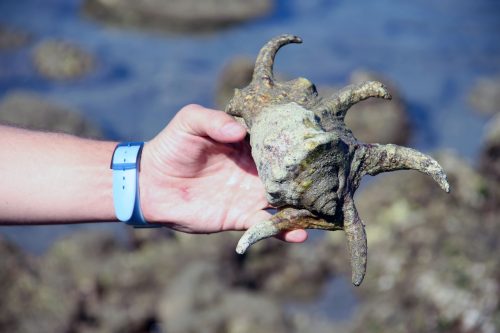
Shell
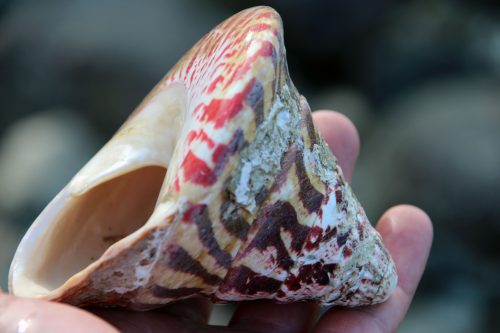
Sheller
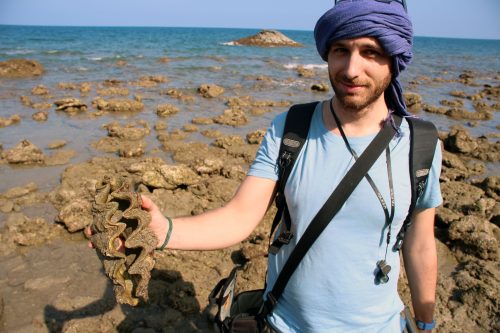
Shellst
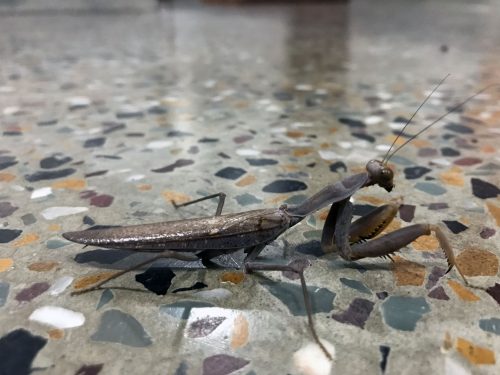
Praying Mantis
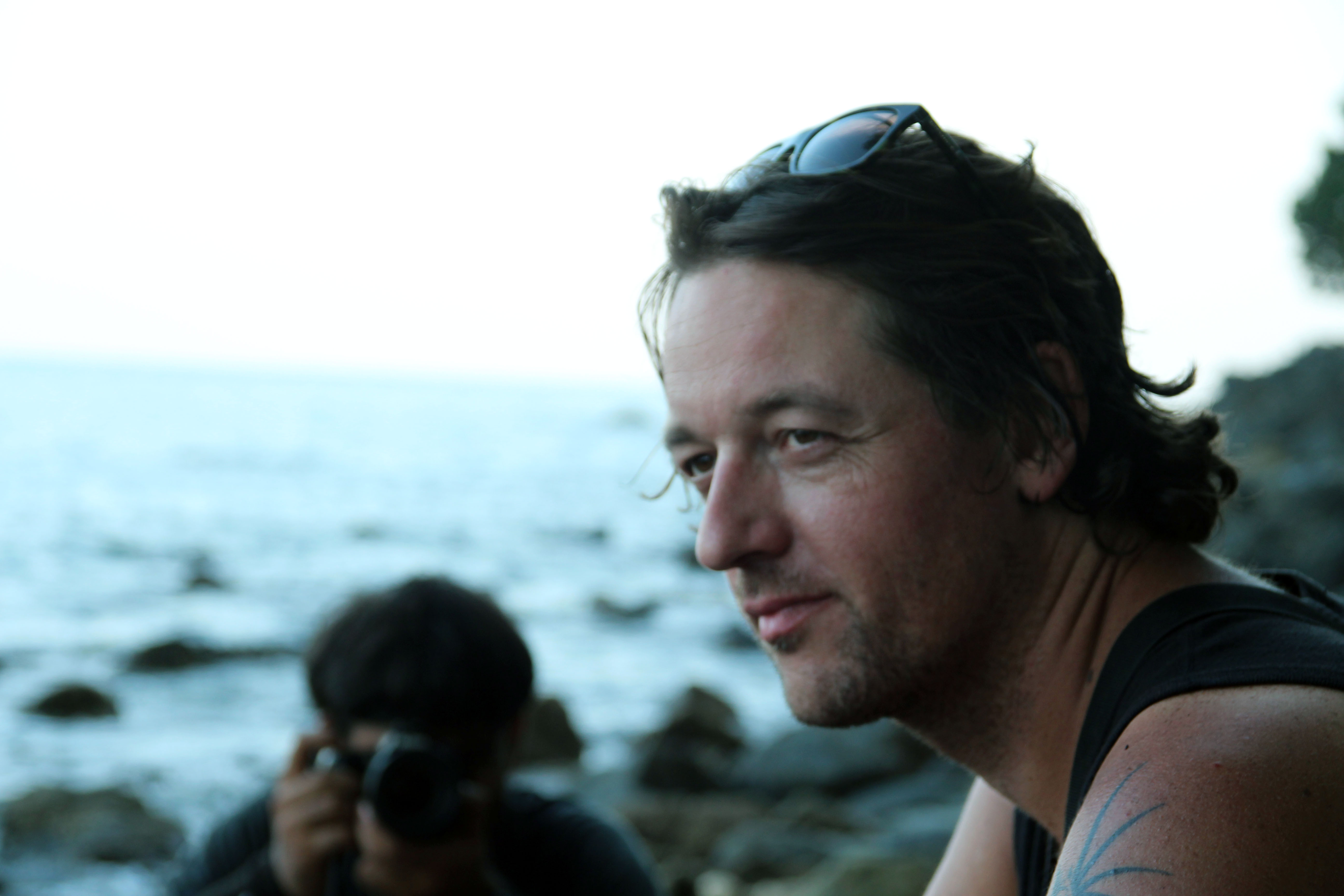
Photomodel. Crappy, worn down one, but still.
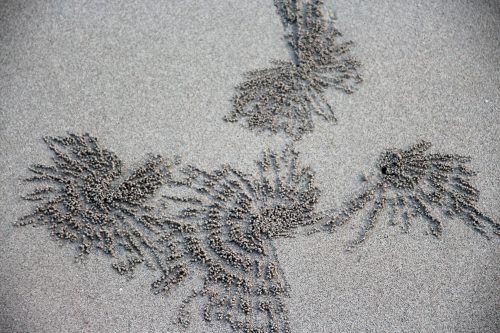
Local crab art
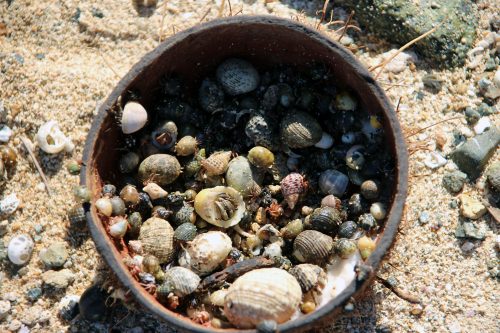
Coconut full of hermite crabs 🙂
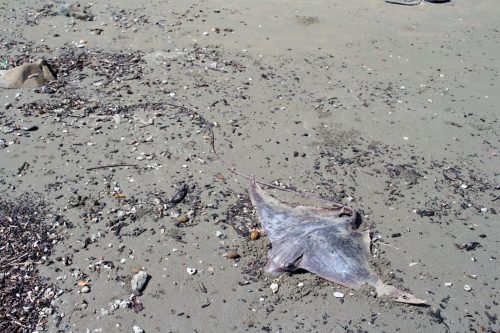
Paleo-stingray
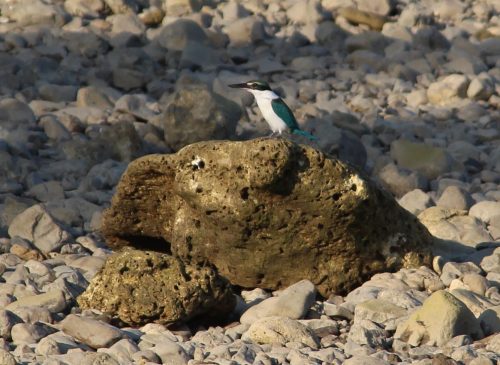
Kingfisher
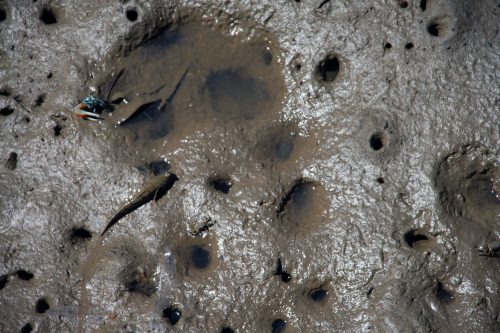
Mudskipper and crabs
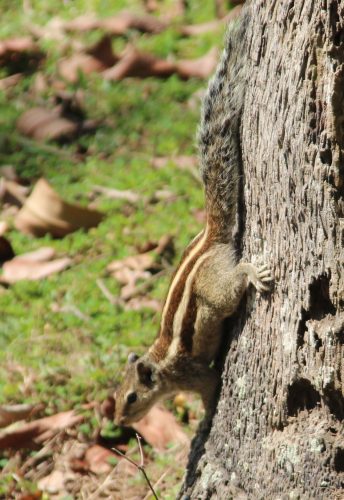
Chipmunk

Fleabag
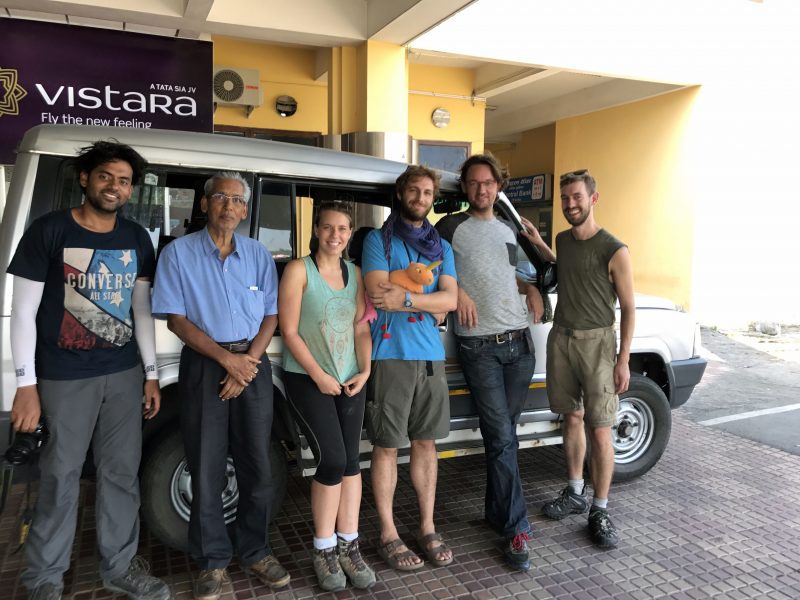
This was a great trip, thanks guys!!

cool photo-essay. Are there radiometric ages for the ophiolite?
Yes, there’s Pedersen et al J Geol Soc 2010 and Sarma et al J Geol 2010, who both dated plagiogranites at 93-95 Ma. Sarma is in situ plagiogranite, Pedersen dated plagiogranite xenoliths in a post-ophiolitic volcanic deposit (but didn’t say so in their paper).